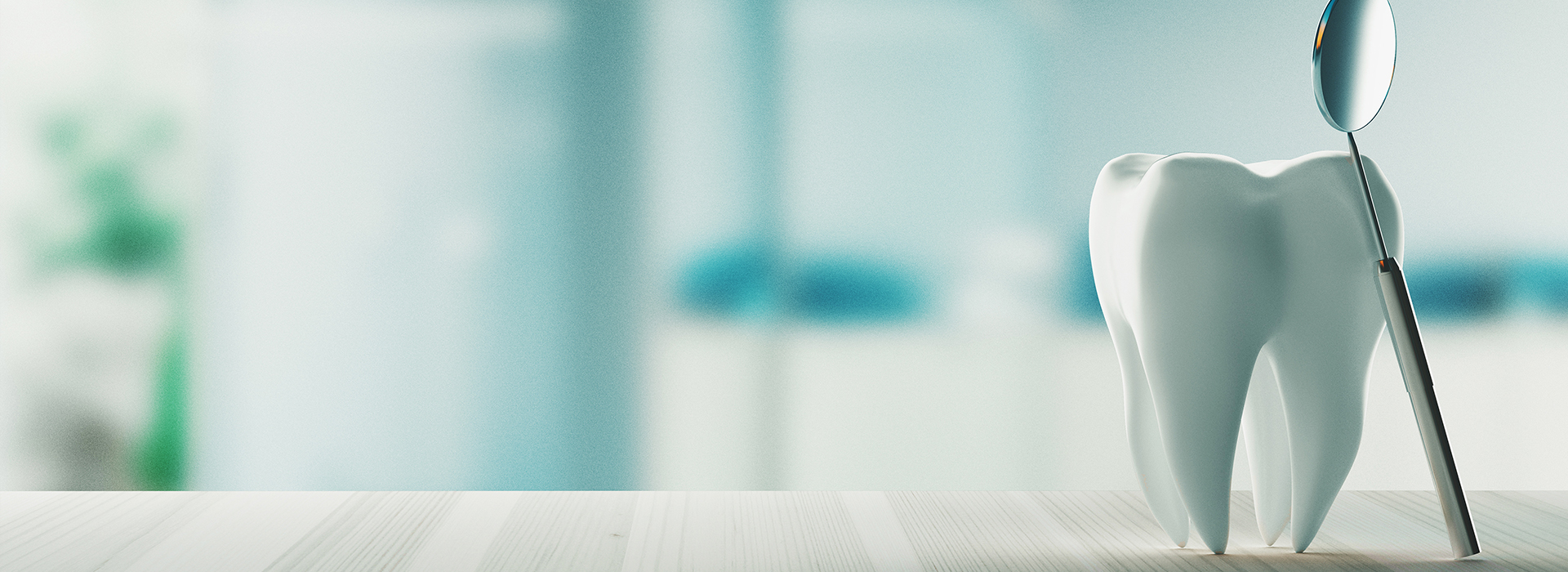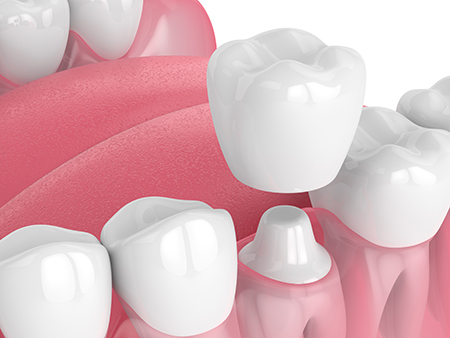
At the office of Dr. Aaron Tropmann & Dr. Gary Oyster, we combine modern materials and thoughtful planning to restore teeth that are broken, weakened, or cosmetically compromised. Our approach emphasizes predictable results that look natural and preserve as much healthy tooth structure as possible. Patients appreciate that we take time to explain options clearly and tailor each treatment plan to individual needs.
Teeth face a lifetime of wear, decay, and occasional trauma. When a tooth has lost substantial structure or has been weakened by a large filling, root canal therapy, or a crack, a simple filling may not be the most reliable long-term solution. A well-designed crown restores strength and function while improving appearance.
Advances in dental ceramics now allow us to offer crowns that are metal-free, highly durable, and very lifelike. These all-ceramic restorations are crafted to match the shape, color, and translucency of natural teeth, so they blend seamlessly with surrounding dentition. The result is a restoration that performs well and looks like it belongs.
Patient comfort, clear communication, and individualized care are central to our practice. From your initial evaluation through the final placement of your crown, we focus on achieving a balance of function and esthetics so you can smile confidently and bite with comfort.
A crown restores a tooth's full form and protective outer surface when too much natural structure has been lost for a filling to be effective. Rather than relying on a patch, a crown covers the entire visible portion of the tooth above the gumline, reinforcing it against further fracture and wear.
Dentists commonly recommend crowns after extensive decay has been removed, when an older restoration fails, or when a tooth has been treated with a root canal and needs reinforcement. Crowns are also the restoration of choice to anchor a traditional bridge or to cap an implant for a secure, natural-feeling replacement.
In addition to restoring strength, crowns provide an opportunity to improve the appearance of a tooth that is misshapen, discolored, or proportionally small. For many patients, a crown offers both functional repair and a cosmetic upgrade in a single restoration.
To repair a tooth with extensive decay or structural damage
To replace a large or failing filling that no longer protects the tooth
To restore a dental implant with a natural-looking crown
To serve as the supporting restoration for a fixed dental bridge
To strengthen and protect a tooth after root canal therapy
To improve the appearance of a misshapen, stained, or undersized tooth
To correct bite relationships and distribute chewing forces more evenly

All-ceramic crowns are prized for their ability to mimic the optical properties of natural teeth. Unlike metal-based restorations, ceramic crowns transmit and reflect light in ways that create depth and translucency, giving them a lifelike appearance that is especially important for front teeth.
Beyond esthetics, contemporary ceramics are engineered for strength and longevity. Materials such as lithium disilicate and high-strength zirconia are now dependable choices for both anterior and posterior restorations. They resist staining, maintain color consistency over time, and are biocompatible with surrounding gum tissue.
These crowns are also advantageous when metal sensitivities or allergies are a concern, since they contain no metal substructure. In many cases, ceramic restorations require less aggressive tooth reduction than older crown types, allowing us to preserve more of the natural tooth while still achieving a secure, durable fit.
Natural translucency and color matching for superior esthetics
Strong and long-lasting materials suitable for most areas of the mouth
Metal-free composition that is gentle on gums and tissues
Resistance to stains and long-term discoloration
Reduced risk of a visible dark margin at the gumline
Often requires less tooth reduction compared with older crown types

Not all ceramic crowns are the same. The right material depends on where the crown will sit in the mouth, how much chewing force it must withstand, and how closely it must match the neighboring teeth. We evaluate these factors carefully to recommend the best option for each situation.
Lithium disilicate, for example, combines excellent esthetics with good strength and is often chosen for front teeth and visible areas. Zirconia, in its monolithic or layered forms, provides outstanding durability and is an excellent choice for molars and other high-stress zones. High-translucency zirconia and pressed porcelain variants give clinicians more tools to balance beauty and strength.
Our team works with advanced digital workflows and precision milling to ensure the crown's fit, occlusion, and contours are accurate. Whether a crown is fabricated in-office with same-day milling technology or crafted in a trusted dental laboratory, quality control and shade matching are central to producing a seamless restoration.
We consider the long-term function as well as the immediate look. That means talking through pros and cons of each material, explaining how the chosen ceramic interacts with opposing teeth, and planning for the most conservative preparation that achieves reliable retention.
Lithium disilicate porcelain crowns for esthetic anterior restorations
Leucite-reinforced pressed ceramics for blended esthetics and strength
Monolithic (solid) zirconia for maximum durability in posterior regions
High-translucent zirconia when both strength and appearance are essential

Your ceramic crown process begins with a thorough exam and discussion of goals. We assess the tooth's condition, take necessary x-rays or digital scans, and review any previous dental work that could affect planning. This initial step informs everything that follows and helps set realistic expectations.
To prepare the tooth, we remove any decay or compromised material and shape the surface to receive the crown. In many cases, a temporary crown is placed to protect the tooth while the final restoration is being made. With digital impression technology, we can capture accurate detail for a precise fit without traditional putty impressions when appropriate.
Upon crown delivery, we evaluate fit, color match, and bite, making subtle adjustments as needed. Once the seated restoration meets our standards for comfort and function, it is permanently bonded or cemented in place. Aftercare focuses on ordinary oral hygiene and monitoring the restoration during routine checkups to ensure long-term success.
Our goal is to provide crowns that remain stable and attractive for years. Achieving that outcome requires a combination of skilled preparation, high-quality materials, precise fabrication, and attention to bite dynamics. We invest in continuing education and technology to maintain consistent, high-quality results.
We also emphasize patient education: how to care for your crown, what habits to avoid, and which signs to watch for that suggest a review is needed. Routine dental cleanings and examinations allow us to monitor the crown and surrounding tissues and to address any minor issues before they become larger problems.
When you choose care with our team, you can expect an evidence-based approach that balances durability with natural-looking esthetics. We aim to restore teeth in a way that supports long-term oral health while helping patients feel confident about their smiles.
In summary, ceramic crowns offer a versatile, attractive, and biocompatible option for restoring damaged or cosmetically imperfect teeth. If you would like to learn more about whether an all-ceramic crown is right for you, please contact us for more information.

A ceramic crown is a tooth-shaped restoration made entirely from dental ceramics that covers the visible portion of a damaged or weakened tooth. Unlike porcelain-fused-to-metal crowns, all-ceramic crowns contain no metal substructure, which allows for improved translucency and a more natural appearance. Modern ceramics are engineered to reproduce the way natural enamel transmits and reflects light for lifelike esthetics.
These restorations can be used on natural teeth and implants depending on the material selection and clinical needs. Ceramic crowns are available in a range of formulations that balance appearance and strength, giving clinicians options tailored to each situation. Proper planning and material choice help ensure the crown performs well while blending with adjacent teeth.
A ceramic crown is typically recommended when a tooth has lost substantial structure due to decay, a large existing filling, a crack, or after root canal therapy. When a simple filling cannot reliably restore the form and function of the tooth, a crown covers and protects the remaining tooth structure to reduce the risk of fracture. Crowns are also used to restore implants and to support fixed dental bridges when a durable full-coverage restoration is needed.
Clinicians evaluate the amount of remaining tooth, occlusal forces, and esthetic goals when deciding between a crown and a more conservative option. In some cases an inlay or onlay may suffice, while in others full coverage is the most predictable long-term solution. The choice is made to optimize longevity, function, and appearance for each individual tooth.
Common ceramic materials include lithium disilicate, leucite-reinforced ceramics, and various forms of zirconia, each offering different balances of strength and esthetics. Lithium disilicate is known for excellent esthetics and good strength, making it a frequent choice for anterior restorations, while monolithic zirconia provides higher fracture resistance for posterior load-bearing areas. High-translucency zirconia and layered ceramic techniques are used when both durability and a natural appearance are important.
Material selection depends on the tooth position, bite forces, and desired cosmetic outcome, and each material has specific handling and bonding protocols. The restorative team considers how the chosen ceramic will interact with opposing teeth and surrounding soft tissues. Detailed discussion of pros and cons helps patients understand why a particular ceramic is recommended for their case.
The process begins with a comprehensive evaluation, including x-rays or digital scans to assess the tooth and surrounding structures. The tooth is prepared by removing decay and shaping the surface to receive the crown, and a digital or conventional impression is taken to capture precise detail for the laboratory or in-office milling unit. A temporary crown may be placed to protect the tooth while the final restoration is fabricated.
At the delivery appointment the clinician evaluates fit, color match, and occlusion, making small adjustments before permanently bonding or cementing the crown. Modern digital workflows and precision milling or lab fabrication improve the accuracy of fit and reduce the need for extensive adjustments. Follow-up includes routine monitoring to ensure the restoration integrates well with the bite and surrounding tissues.
Yes, many contemporary ceramics are suitable for posterior teeth when the material and design are matched to the clinical demands. Monolithic zirconia and high-strength ceramics provide the fracture resistance required in high-stress areas, while still offering acceptable esthetics for posterior teeth. The restoration design, occlusal scheme, and cementation protocol all influence the crown’s long-term performance under chewing forces.
The dental team evaluates bite patterns, bruxism risk, and opposing materials to recommend an appropriate ceramic and occlusal design. In cases of heavy occlusal loads, specific thicknesses and material choices are prioritized to reduce the risk of wear or fracture. Periodic reviews help detect early signs of wear so adjustments or protective measures can be implemented if needed.
Shade matching begins with a careful evaluation of the surrounding teeth under natural and clinical lighting conditions to select the correct hue, chroma, and translucency. Digital shade photography, custom shade guides, and communication with the dental laboratory or in-office milling software enable precise replication of color nuances. Layering techniques and stains can be applied to ceramics to reproduce depth and character when necessary.
Clinicians also consider factors such as the underlying tooth color, translucency of the ceramic, and the effect of cement shade on the final appearance. A trial evaluation during try-in allows small adjustments before final cementation to achieve seamless integration. This attention to detail is important for creating a restoration that is indistinguishable from natural dentition.
Metal-free ceramic crowns are biocompatible with soft tissues and eliminate the risk of visible dark margins at the gumline that can occur with metal-based restorations. Their resistance to staining and stable color over time helps maintain a natural appearance and can reduce aesthetic maintenance. Ceramics are also inert materials that generally do not provoke galvanic reactions or allergic responses associated with certain metals.
Because ceramics can often be prepared with more conservative tooth reduction than older crown types, more natural tooth structure may be preserved when appropriate. Maintaining healthy margins and good oral hygiene supports the longevity of the restoration and the health of adjacent gums. Regular examinations allow clinicians to monitor tissue response and address any concerns early.
Care for a ceramic crown focuses on excellent daily oral hygiene, including brushing with a fluoride toothpaste and cleaning between teeth with floss or interdental brushes to prevent decay at the crown margins. Avoiding hard or non-food objects and reducing parafunctional habits such as nail biting or opening packages with teeth helps minimize the risk of chipping. If you have a tendency to grind or clench, the dentist may recommend a protective occlusal appliance to safeguard the crown.
Routine dental visits for professional cleanings and examinations allow the team to check the crown, surrounding tissue, and bite relationships and to make any minor adjustments if necessary. Prompt attention to sensitivity, looseness, or changes in appearance helps address issues before they progress. Following tailored aftercare instructions given by your clinician supports the restoration’s long-term success.
Potential complications include marginal decay, loss of retention, porcelain chipping, and changes in the opposing dentition if occlusion is not properly managed. Many of these issues are preventable with careful preparation, accurate fit, appropriate material selection, and patient adherence to oral hygiene recommendations. If a complication arises, treatment options range from repair of minor defects to recementation or replacement of the crown depending on the severity.
Clinicians monitor restorations during routine visits to detect early signs of wear, marginal breakdown, or soft tissue changes so conservative corrections can be made. Managing underlying factors such as bruxism or misaligned bite forces is also essential to reduce the likelihood of future problems. Clear communication about warning signs and prompt evaluation helps protect the restoration and overall oral health.
Our approach combines thorough diagnosis, careful tooth preparation, and selection of appropriate ceramic materials based on the tooth’s location and functional demands. We use advanced digital workflows, precision milling, or trusted dental laboratories to achieve accurate margins, proper occlusion, and consistent shade matching. Attention to bite dynamics and laboratory communication reduces the need for extensive chairside adjustments and improves long-term performance.
We also emphasize patient education about maintenance and protective strategies to support the restoration’s longevity, and we schedule follow-up visits to monitor function and tissue health. When necessary, we recommend adjunctive measures such as night guards or occlusal adjustments to protect restorations from excessive forces. This combination of technology, technique, and preventive care helps deliver durable, natural-looking results you can rely on.

Ready to book your next appointment or have a question for our team? We're here to help.
Connecting with our team is simple! Our friendly staff is here to help with appointment scheduling, answer any questions about your treatment options, and address any concerns you may have. Whether you prefer to give us a call, send an email, or fill out our convenient online contact form, we’re ready to assist you. Take the first step toward a healthier, brighter smile – reach out to us today and experience the difference compassionate, personalized dental care can make.